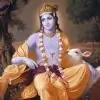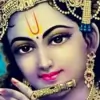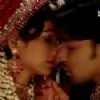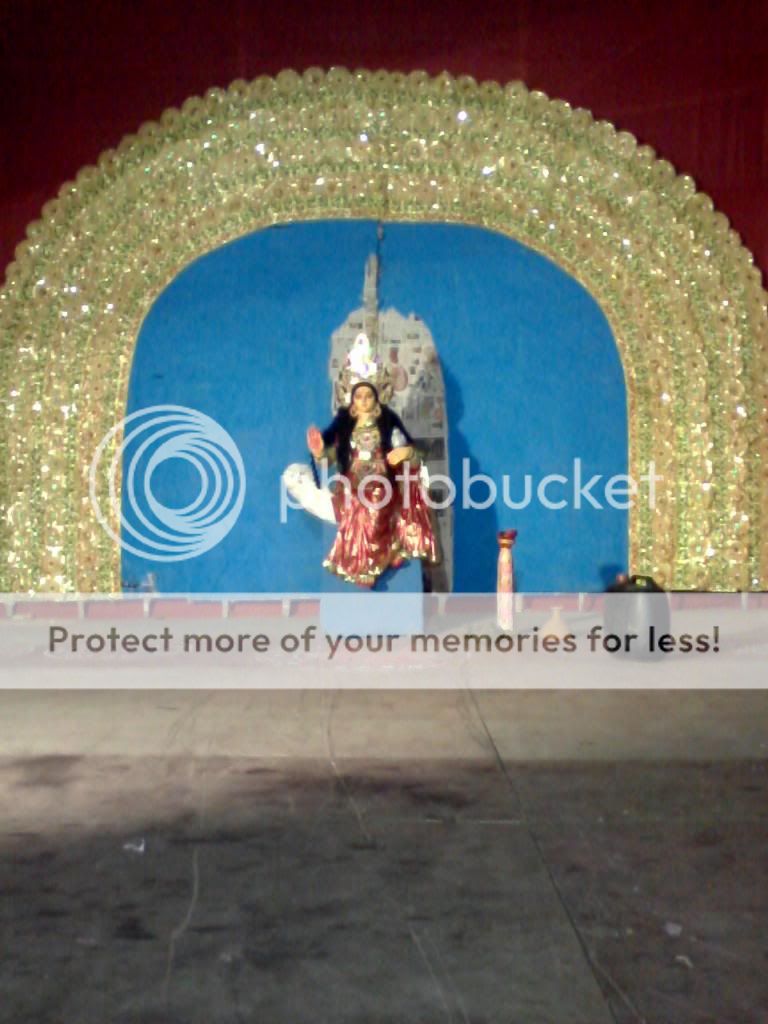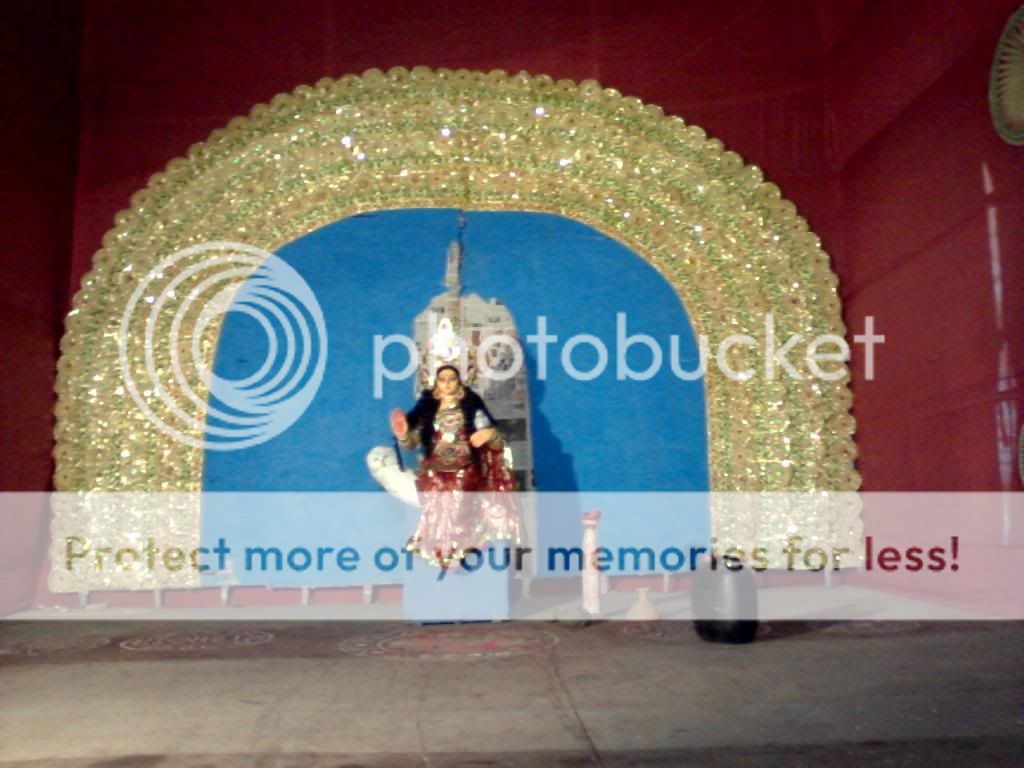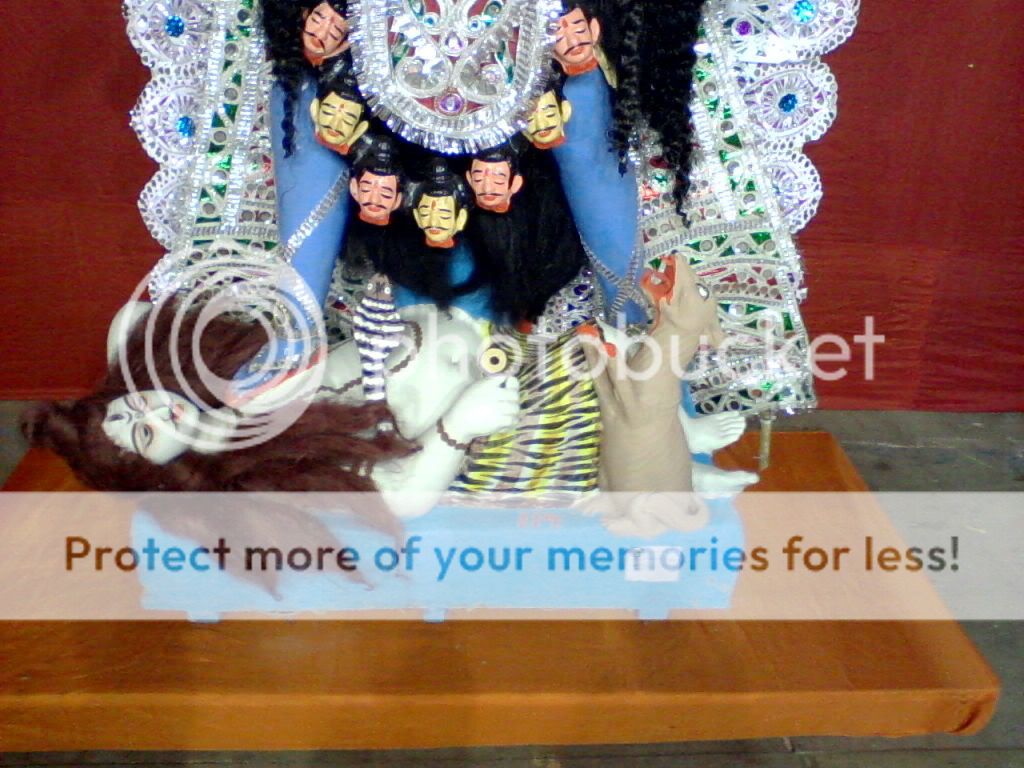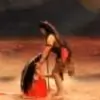When the entire Bengal, nay India, was under the British rule, inspite of being under the French administration at that time Chandannagar created a distinct tradition. Jagadhatri Puja is a major socio-cultural event in this region. The ancient history of Jagadhatri Puja in Chandannagar is unknown even today. It is heard that Indranarayan Chowdhury introduced the Jagadhatri Puja in Chandannagar in the manner of King Krishnachandra of Krishnanagore. The time of beginning of Jagadhatri Puja in Krishnanagore was 1762. Indranarayan Choudhury died in 1756. So Indranarayan Choudhury by no means introduce the Jagadhatri puja in Chandannagar. The beginning of Jagadhatri puja in Chandannagar probably dates back earlier than 1750. Indranarayan Choudhury performed the Jagadhatri puja at his own house in Chandannagar, at the time Krishna Chandra used to come to borrow money from Indranarayan Choudhury. Perhaps Krishnachandra was attracted to greatness of Jagadhatri at this time. The formal difference between Durga and Jagadhatri occurs in 'Mayatantra' and Jagadhatri is mentioned with reference to Durga in Krishnanda's 'Tantasaar'. The ruling to perform the special puja of the goddess on the ninth lunar day of the light fortnight in the month of Kartick has ben referred in 'Krityatattarnab' by Srinath Acharyachuramoni of the 15th-16th century. The fourhanded goddess is carried by the lion everywhere, an elephant
 lies of the feet of the lion. The idol has an old fashioned shaping, i.e. the face cutting is of a longish pattern; it has large eyes spread upto the years and the four hands display conch, discus, shaft, and bow respectively. The snake is her sacred thread.One of the main attraction of Jagadhatri idol of Chandannagar is the ornamental decoration of the goddess with sola and beautiful canvas of mats with painting at the back of the image.
lies of the feet of the lion. The idol has an old fashioned shaping, i.e. the face cutting is of a longish pattern; it has large eyes spread upto the years and the four hands display conch, discus, shaft, and bow respectively. The snake is her sacred thread.One of the main attraction of Jagadhatri idol of Chandannagar is the ornamental decoration of the goddess with sola and beautiful canvas of mats with painting at the back of the image.The number of community pujas in Chandannagar, Bhadreswar and Champdany Municipal areas crosses 190 mark. Of these, 132 Puja committees in different localities in Chandannagar and Bhadreswar areaffiliated to the Chandannagar Central Jagadhatri Puja Committee. The Central committee renders all possible assistance to its constituents in getting permissions and clearances for holding Puja. The immersion procession is really memorable and enjoyable sight to witness which lakh of people throng in Chandannagar from far and near. The beautiful decorated tall images loaded on trucks are taken around the cityin a procession. This year 51 puja committees will take part in the procession.
Jagadhatri Puja Festival of Bengal
About Jagadhatri Puja
Jagadhatri Puja is devoted to Mother Jagadhatri who is considered and known as another form of Shakti, the Supreme mother goddess of the Hindus. Next to the well known Durga Puja celebrated all over the state West Bengal, Jagdhatri Puja is also celebrated with the same fervour and enthusiasm. Jagadhatri worship is mostly celebrated only in the state of West Bengal and is not much known much outside the state.
The cult of Jagdhatri is derived from the Tantra where she is the symbol of Sattva beside Durga and Kali and is respectably symbolised with Rajas and Tamas. Jagadhatri Puja is celebrated on the 9th lunar day of the light fortnight of the month of Karthika as mentioned in the "Krityatattarnab" by Srinath acharyachuramoni of the 15th and 16th century.
Depiction of the Mother Jagadhatri for the Puja
Goddess Jagdhatri is depicted as of the colour of the rising morning sun, three eyed and four armed, in the tantras and Puranas. Armed with Chakra, Conch, bow and arrow she is decked up with red attires, bright jewels and nagajangopaveeta which is a symbol of Yoga and the Brahman. She sits there riding on the lion standing on the Elephant Demon Karindrasura accompanied by Dhak, Dhunuchi nachh and the mild fragrance of Sheuli
How the Jagadhatri Puja was started at Sri Ramakrishna Mission Centers
Jagdhatri Puja celebrated in Chandan Nagar , Hoogly, Krishnan Nagar is a special socio cultural celebration and is considered as a major autumn event . In the Sri Ramakrishna Mission, Sarada Devi, the wife of Sri Ramakrishna, initiated the Jagdhatri Puja celebrations. According to the popular belief ampong the masses of West Bengal , Sarada Devi is considered to be the an avatara of the Goddess Devi and is similarly considered in all the centres of Sri Ramakrishna Missions all over the world.
Last three day Rituals of the Jagadhatri Puja
Ashtami is the starting point of the 3 day celebrations of the Jagadhatri Puja. On te Ashtami day Devi is worshipped as the giver / provider of Wealth, Sustenance, Good luck as well as prosperity. All the devotees together recite prayers to invoke the Goddess's Blessings and distribute Ashtami Bhog / prasada of the offerings to the goddess, to all the devotees present there.
Navami is the second day which is considered to be the day the Goddess was conceived and sent to the earth. Animal Sacrifices are the main rituals of this day but this has been substituted by Chalkumro, cucumber and banana.
The Final Day of Jagadhatri Puja Festivals
Dashmi is called as the Vijayadashmi when the Goddess is taken over the area in a procession and gets immersed in the river. This yearly visit of the Goddess Jagadhatri is celebrated as a festival of the victory of good over evil and brings happiness to the people.
The city as well as the suburbs of Kolkata, never sleeps during these five days and the people enjoy a lot. There is no caste, religion or creed and all participate in this great festival, giving rise to a brotherly spirit.
The beat of drums, the clash of cymbals, the ringing of bells, dances before the image of Devi, incense wafting in the air, all form an integral part of the Puja. All too soon on Dashami, the day when the images are taken in a procession and immersed in the river Hooghly.


